Foolproof all butter pie crust is the best and ONLY pie dough recipe you’ll ever need for your pie recipes! Easy to roll out with a rolling pin and no food processor required. Flaky and flavorful, this butter pie crust recipe is perfect for cherry pie, pumpkin pie, or apple pie! Includes recipes for single crust pie, double crust, and blind baking instructions.
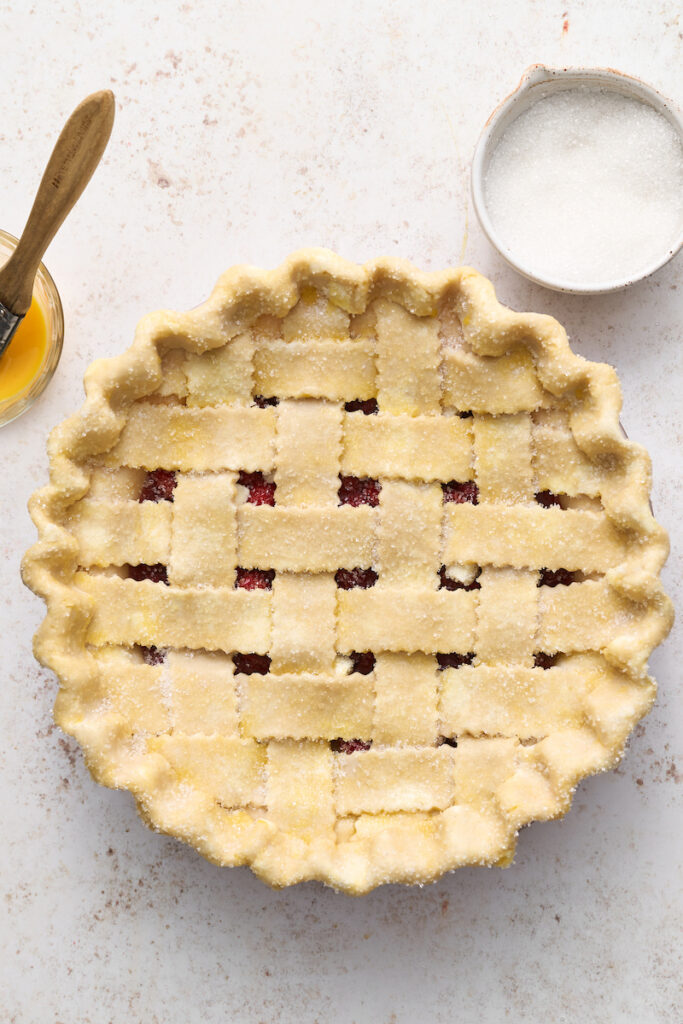
Originally published in 2016, I’ve recently updated this recipe to be even better and easier! I’ve also added new photos plus advice for blind baking, making a lattice, and provide measurements for single crust pies and double crust pies.
If you’d like the old foolproof all-butter pie crust recipe, you can find it in the “notes” section of the recipe box!
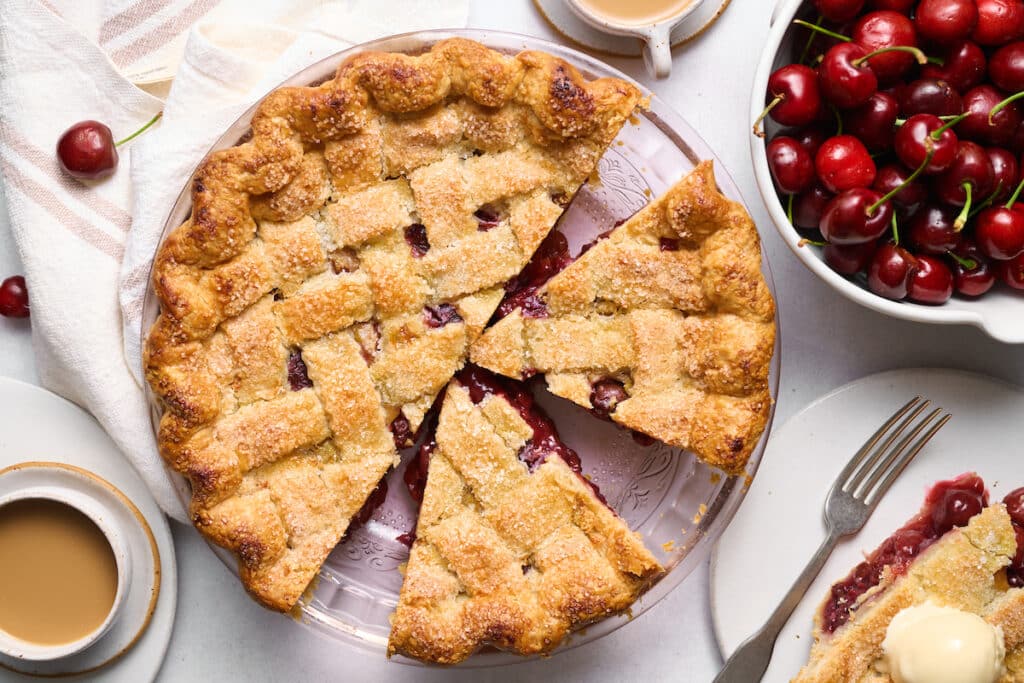
What Makes this The Best Pie Crust Recipe?
I love baking pies but boy are they a labor of love! Especially if you’re using homemade pie dough. Which is why I don’t mess around when it comes to my pie crust recipe! This recipe is *chef’s kiss* perfection.
- Easy to work with, this pie dough comes together fast and rolls out like a dream!
- Rich and buttery flavor, with just a hint of sweetness.
- Bakes up golden brown and flaky… with plenty of crackly crunchy layers.
- Perfect for any pie or quiche recipe!
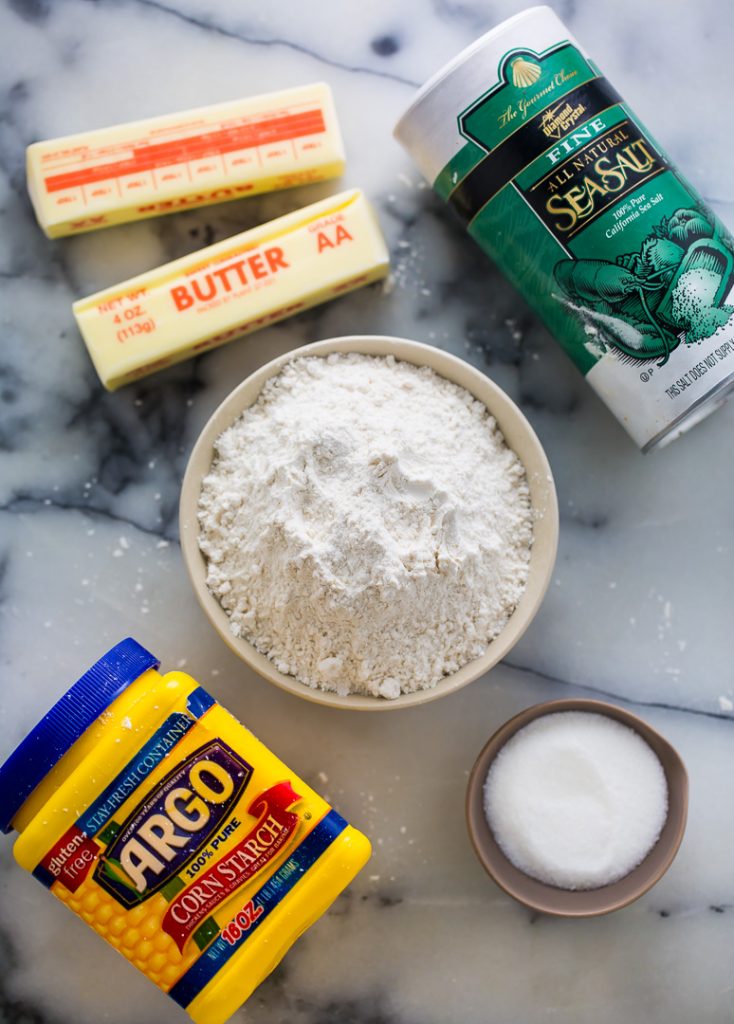
My All Butter Pie Crust Recipe: The Ingredients
- All-Purpose Flour: I use Gold medal flour, and always use a kitchen scale to weigh my flour. Too much flour which will cause dry pie dough.
- Cornstarch: This addition helps create the most tender and flaky pie crust ever.
- Sugar: A small amount of granulated sugar sweetens the pie dough. Just sweet enough for pie recipes like cherry pie and apple pie. But if you’re using this pie dough for a savory pie or quiche, you can cut the sugar to 1 Tablespoon.
- Salt: Balances sweetness and enhances all the flavors in the pie dough.
- Butter: I love using European-style butter because it’s higher in fat content than standard butter. Make sure you keep your butter cold! Cube the butter and freeze for 5 minutes before use.
- Ice Water: To create ice water add one ice cube to a measuring glass. Fill it up with cold water, mixing gently until the ice has completely melted.
- Apple Cider Vinegar: A splash makes the pie dough more tender and ensures you don’t over work the dough.
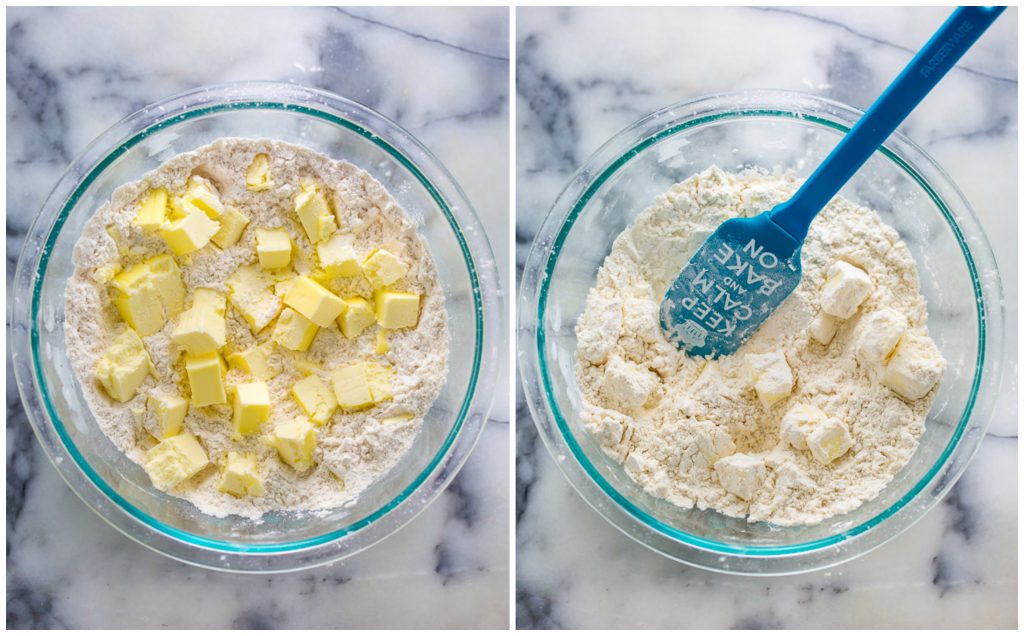
Let’s Make Pie Crust: My Pie Foolproof Pie Dough
- Mix the Ingredients: In a large bowl, mix the flour, cornstarch, sugar, and salt. Add in the cold butter and toss well to coat the butter in the flour.
- Work the Butter: Using a pastry cutter, work the butter into the flour until it’s about the size of peas.
- Add Ice Water: Use just enough ice water to form moist clumps. I suggest adding 3/4 of the ice water and working it into the dough. Then adding more only if needed. Too much water creates a tough pie dough.
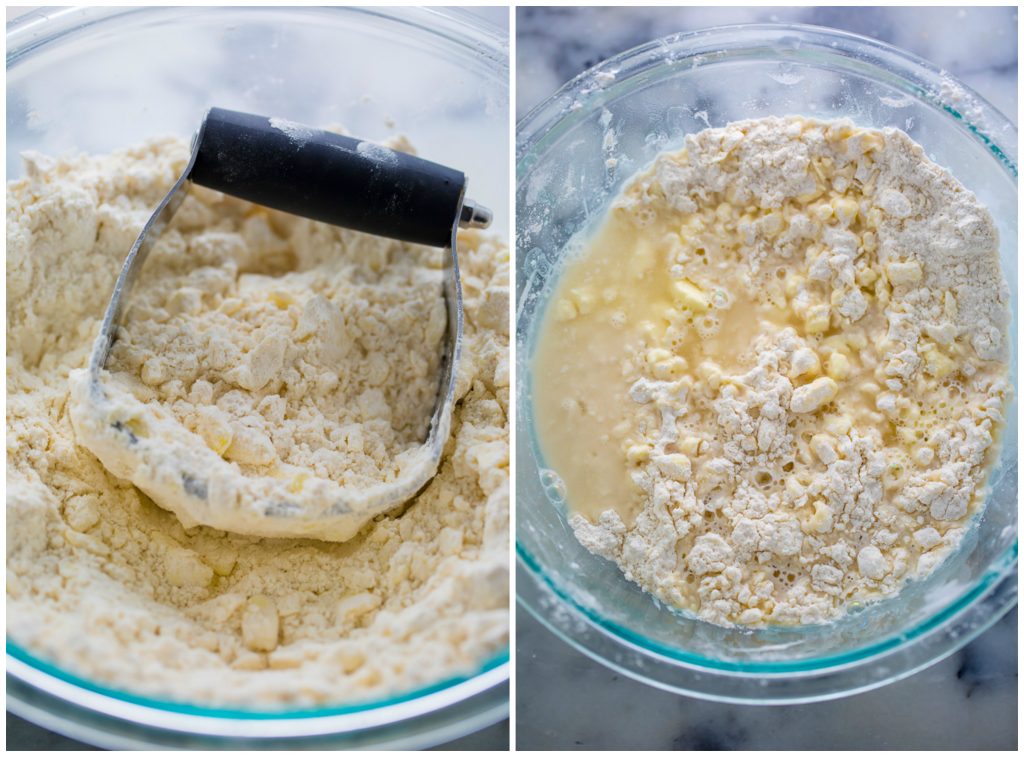
- Knead the Dough: Pour the shaggy dough onto a clean surface and knead it gently together. Adding more ice water only if absolutely needed.
- Wrap and Chill: Press the pie dough into a flat disk and wrap with plastic wrap. Chill for at least 2 hour, or up to 48 hours. You can also freeze pie dough for up to 2 months.
- Roll the Dough: When ready to use, remove the pie dough from the fridge. Allow it to sit at room temperature for 15 minutes before rolling it out with a rolling pin.
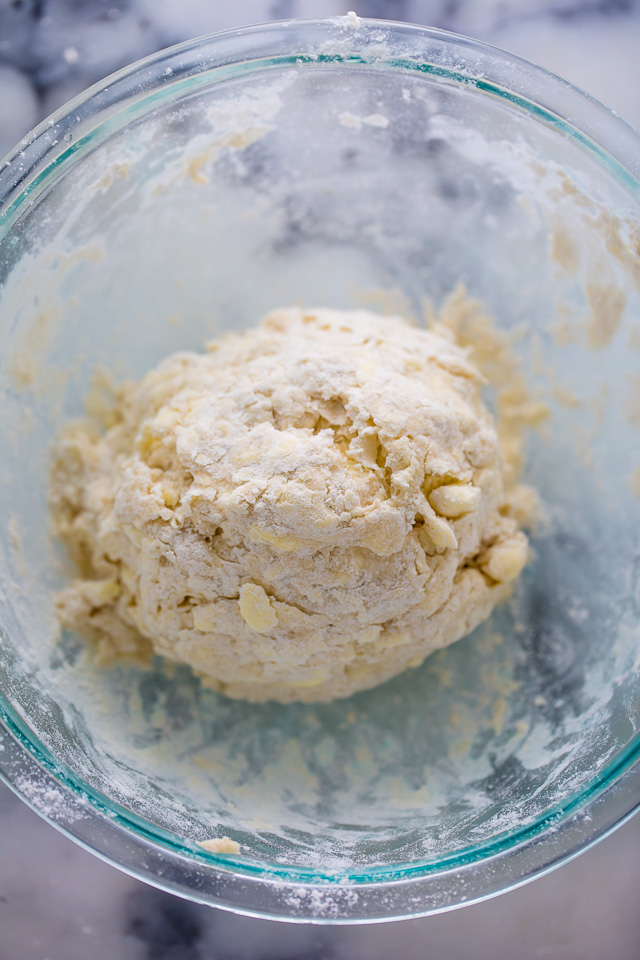
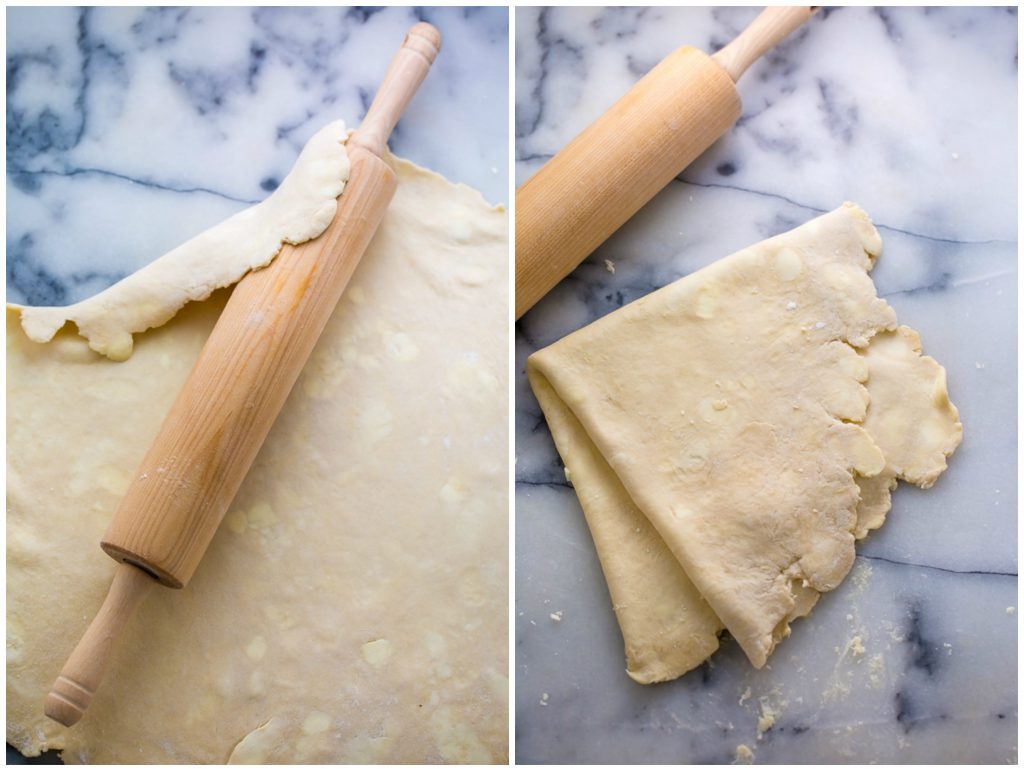
Place in the Pie Dish and Bake
- Once you roll out your pie dough, you can place it into the pie dish. Make sure to gently press the pie dough into the pie plate, making sure not to overstretch it or rip it.
- I always suggest adding cold or room temperature fillings to pie dough. As warm or hot filling will melt the cold butter in the pie dough.
- For best results, your pie dough should be cold when entering the oven. You can always chill your pie for an extra 20 minutes if you think it looks too warm.
- Bake the pie as directed in your recipe. Pie baking times can vary a lot. I provide some suggestions for baking below, but it’s best to follow the recipe developer’s expert advice.
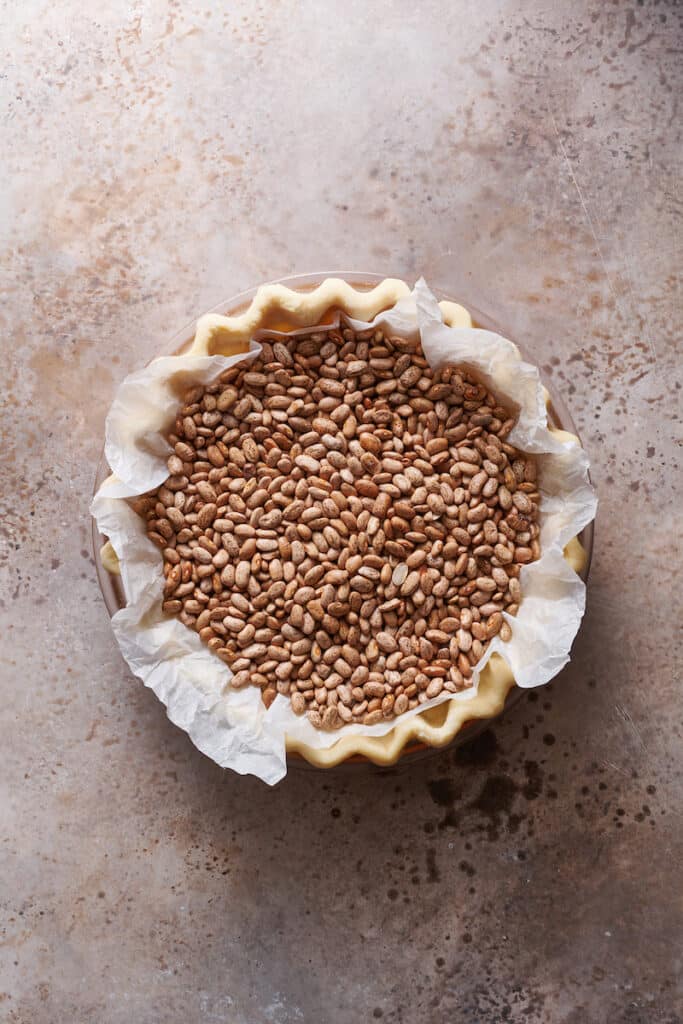
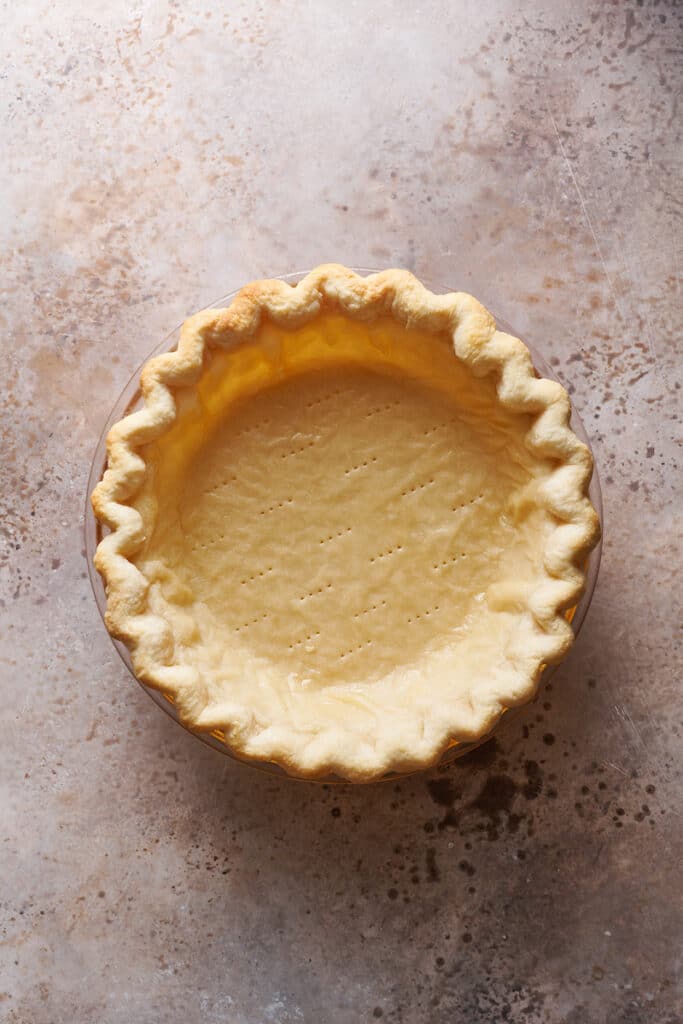
Blind Baking Pie Dough
Blind baking takes extra time and effort, but it’s an essential step for baking pie recipes that have especially wet fillings. Blind baking allows the crust to partially cook and brown before you fill it with the wet filling. This ensures it does not become soggy in the oven. Luckily, blind baking isn’t hard and only requires some parchment paper and dried beans or pie weights.
- Pie Dough: Prepare pie dough and chill as directed. Remove the pie dough from the fridge 15 minutes before needed. This makes it easier to roll out.
- Roll Out the Dough: Start from the bottom of the crust and roll until the dough is about 16-inches in diameter. Press the crust into pie pan. Chill in fridge for 20 minutes.
- Baking Prep: Preheat the oven to 375 degrees (F). Remove the crust from the fridge. Line the bottom of the crust with parchment paper and fill with pie weights or dry beans.
- Blind Bake: For 22 minutes, then carefully remove from the oven. Remove the pie weights and parchment paper and cut the bottom of the crust all over with a fork. Return to the oven and bake for 18 more minutes.
- Use as Directed: At this point, I recommend following the recipe instructions for baking. As pie recipes can vary a lot in bake time. If you find your pie crust is getting too brown during baking, gently cover with aluminum foil.
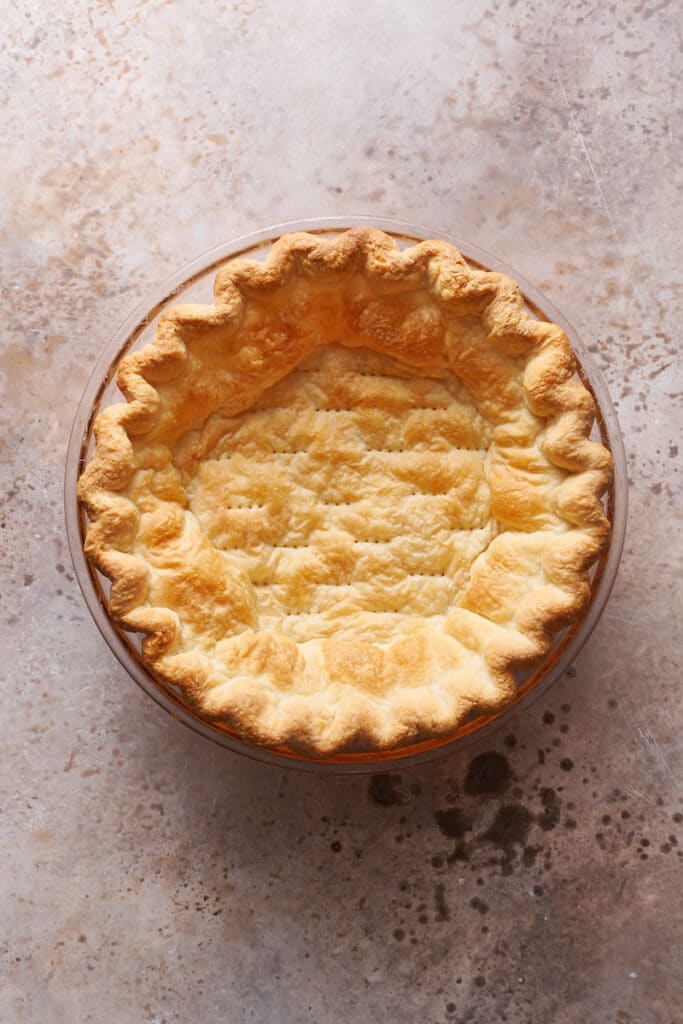
Pie Weights vs Dried Beans
- Pie weights work great and are a reliable way to blind bake pie dough for pie recipes. You can store them easily and use them over and over again.
- Dried beans are an affordable alternative that you probably already have in your kitchen! One downside is that is you use dried beans for blind baking you can’t eat them.
- I also find it takes a lot more dried beans to fill my pie crust than pie weights. And that removing the dried beans can be a little trickier than pie weights.
- But all in all, dried beans work great as a pie weights replacement. And in a pinch, you can even use rice! But again, removing the rice from the pie crust can be tricky. So be careful during that step if using rice or dried beans.
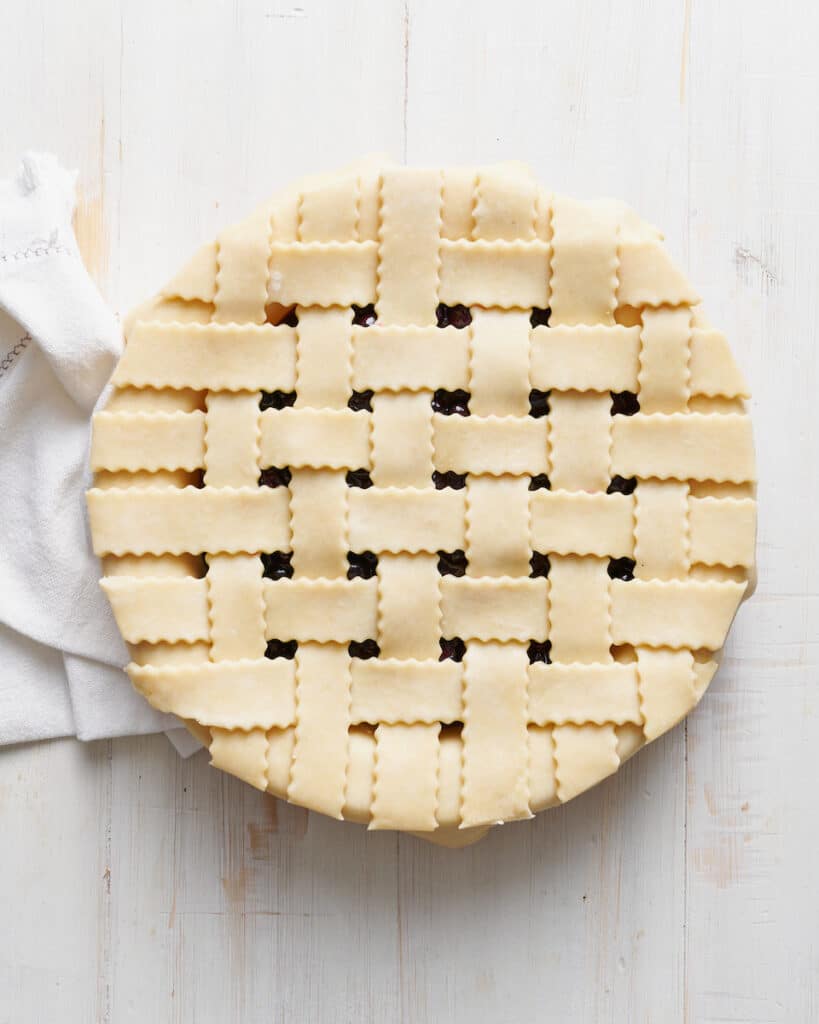
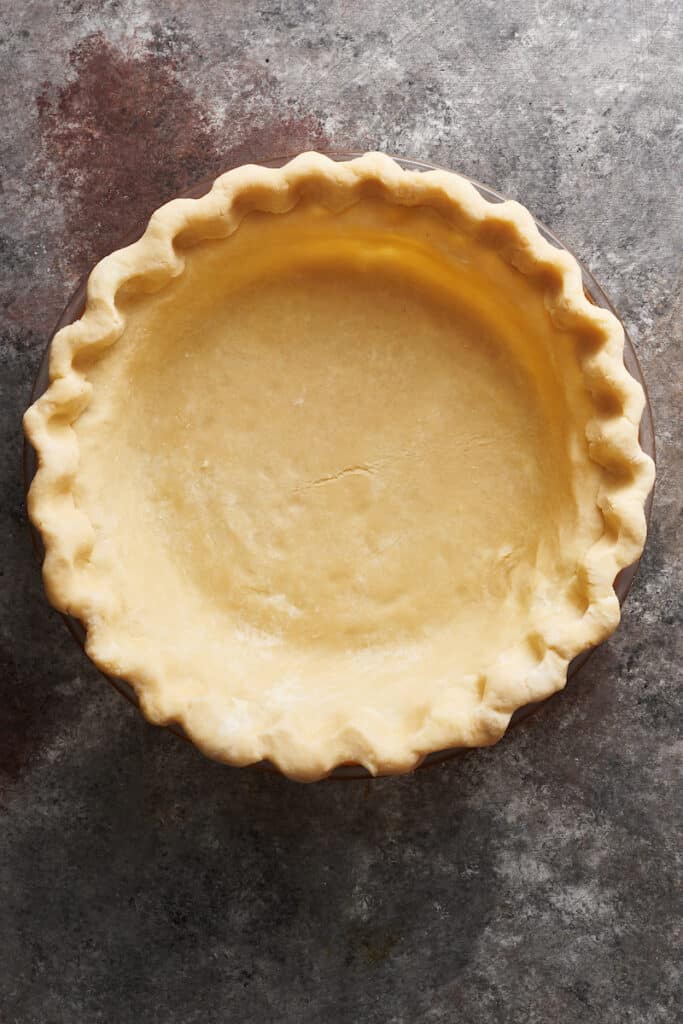
Double Crust vs Single Crust Pie
- For a single crust pie, trim excess dough, leaving a 1/4″ overhang. Roll the overhang underneath the rim of the pie plate and crimp. Refrigerate for 20 minutes.
- For a double crust pie, you’ll leave the same overhang, but roll the extra dough tightly so it sits firmly on the edge of the pie plate. Then, crimp the edges to secure the strips with the bottom crust.
- For a double crust pie, I like to add an egg wash onto the top crust. To apply this, simply brush the top crust with the egg wash using a pastry brush. An egg wash is simply an egg whisked together with a teaspoon of water or milk.
- Sparkling sugar is also lovely on top of a top crust. You can sprinkle it on top of the egg wash.
- I usually avoid using an egg wash on single crusts. It can sink into the pie filling and look unappealing.
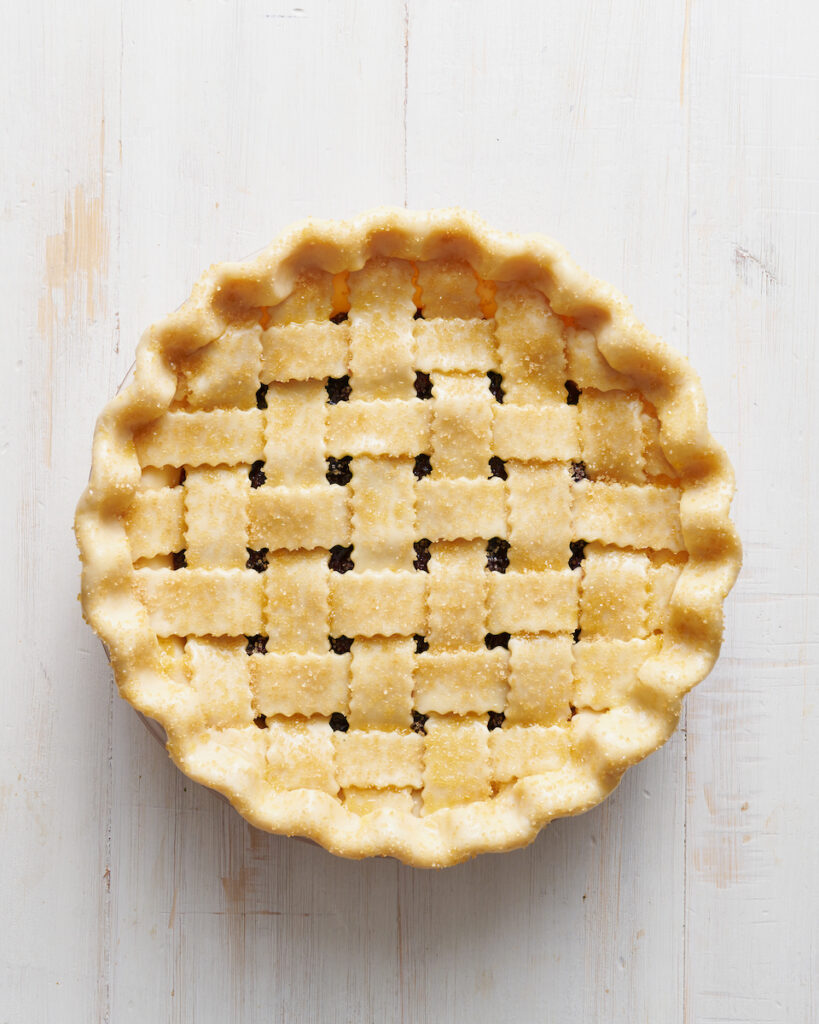
Lattice Crust: Top Crust and Bottom Crust
- I suggest rolling out the bottom crust first, as it’s the easiest. You’ll roll the bottom crust into a large circle and place it into the pie pan. Chill while you prep the top crust.
- For the top crust, roll the pie dough into a large circle. Use a pastry roller to slice the dough into long strips. Place the strips on a large baking sheet and chill the strips before use.
- Make sure both crusts have had time to chill in the fridge before baking. A cold crust will bake up flaky and golden brown! A hot crust will melt in the oven.
The Best Pie Dish for Pie Recipes
When I began baking pies, I had no idea how important of a role the pie dish plays in making the perfect pie!
- Pie plates come in many sizes, and they vary in material, from glass and ceramic to aluminum and metal.
- I prefer to bake with glass pie dishes because glass conducts heat evenly, which helps the crust and filling cook consistently.
- Ceramic pie dishes look gorgeous but can vary in thickness. This can throw off the bake time, especially if you’re using a thick ceramic plate. You may need to add baking time if you’re using a ceramic pie dish.
- Metal pie dishes absorb heat quickly. If you a metal pie plate, I suggest keeping an eye on your pie, and adjusting baking time as needed.
- This recipe makes enough pie dough to line a 9″ or 10″ pie plate.

Best Pie Recipes
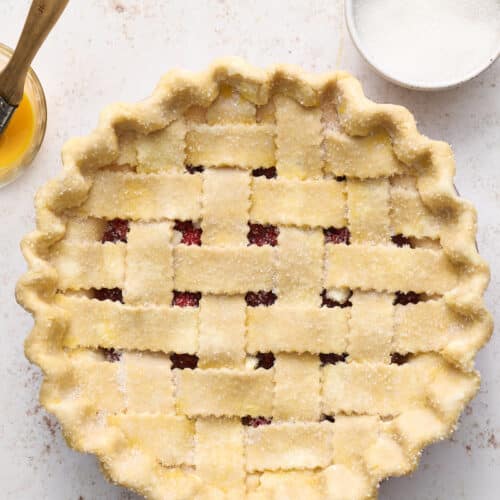
Foolproof All Butter Pie Crust Recipe
Ingredients
- 1/3 cup (76ml) ice cold water
- 2 teaspoons apple cider vinegar
- 2 and 1/4 cups (270g) all-purpose flour
- 1 tablespoon (11g) cornstarch
- 1/2 teaspoon salt
- 2 Tablespoons (28g) granulated sugar
- 1 cup (227) unsalted butter very cold and cut into 1/4-inch cubes
- Recipe above makes a single crust
For Double Crust (2 Crusts):
- 3/4 cup (171ml) ice water
- 1 Tablespoon (14ml) apple cider vinegar
- 4 and 1/2 cups (540g) all-purpose flour
- 2 Tablespoons (22g) cornstarch
- 1 teaspoon salt
- 1/4 cup (57g) granulated sugar
- 2 cups (454g) unsalted butter very cold and cut into 1/4-inch cubes
Instructions
- For Single Pie Curst: In a large glass measuring cup combine the ice water and apple cider vinegar. Place in the freezer (if possible) or fridge until needed.
- In a large bowl, mix the flour, cornstarch, salt, and sugar. Add in the cubed butter and toss with a spatula to coat the butter in the flour.
- Using a pastry cutter, work the butter into the flour until the mixture is a coarse meal. The butter should be about the size of peas.
- Using a silicone spatula, slowly fold in the water. Pour the shaggy dough out onto a clean surface and knead it gently, until it comes together in a ball, adding more ice water only if absolutely needed. Gather the dough into a large ball and gently flatten it into a disk.
- Wrap the disk in plastic wrap and refrigerate for at least 2 hour, or up to 48 hours. Remove the dough from the fridge 15 minutes before you plan on rolling, as dough that is too cold will crack.
- Lightly flour a rolling pin and a large work surface. Place dough in the middle of the surface and – beginning from the center – roll the dough away from you in a firm, even stroke. After each stroke, rotate a quarter turn clockwise and roll again. Lightly sprinkle more flour as needed. Use just enough to prevent the dough from sticking. As your disc becomes larger, be sure not to overstretch the center of the dough. Continue rolling until the dough is about 16-inches in diameter, and around a 1/8" in thickness.
- Carefully fold the dough in half and lay it across one side of a 9-inch or 10-inch glass or metal pie pan, placing the seam of the dough in the center of the pan.
- Gently unfold the crust, then use your hands to fit the dough down into the pan, making sure there are no gaps between the dough and the sides of the pan. If you see any visible air bubbles, gently burst them with a fork.
- Using kitchen scissors, trim the dough overhang to 1/2-inch. Roll the overhang underneath the rim of the pie plate and crimp.
- Lightly cover the crust with plastic wrap and place back in the refrigerator until needed, at least 1 hour. Then bake as directed in the recipe you're using.
- This is for a single pie crust. For a double pie crust see instructions below.
For Double Crust:
- In a large glass measuring cup combine the ice water and apple cider vinegar. Place in the freezer (if possible) or fridge until needed.
- In a large bowl, mix the flour, cornstarch, salt, and sugar. Add in the cubed butter and toss with a spatula to coat the butter in the flour.
- Using a pastry cutter, work the butter into the flour until the mixture is a coarse meal. The butter should be about the size of peas.
- Using a silicone spatula, slowly fold in the water. Pour the shaggy dough out onto a clean surface and knead it gently, until it comes together in a ball, adding more ice water only if absolutely needed.
- Gather into a large ball and divide in half (use a kitchen scale for even weights, each half should weigh about 644 g). Gently flatten each half into a disk. Wrap in plastic wrap and place in the refrigerator to chill for at least 2 hours, or up to 24 hours.
- Remove the disks of pie dough from the fridge 15 minutes before rolling out. For the bottom pie crust follow the rolling out instructions listed in the single pie instructions above (keep chilled in the fridge until needed). If making a lattice crust for the top pie crust, follow the instructions below.
For Lattice Strips:
- Remove the second disk of the dough from the fridge and let it sit at room temperature for 15 minutes before you plan on rolling.
- Line a large baking sheet with parchment paper and set it aside until needed.
- Lightly flour a rolling pin and a large work surface. Set the dough in the middle of the surface and – beginning from the center of the disc – roll the dough away from you in one firm and even stroke. After each stroke, rotate the disc a quarter turn clockwise and roll again. Lightly sprinkle more flour on the work surface, pie dough, and rolling pin as needed. You want to use just enough to prevent the dough from sticking. As your disc of dough becomes larger, be sure not to overstretch the center of the dough. Continue rolling until the dough is about 16-inches in diameter, and around a 1/8” in thickness.
- Using a pizza cutter or pastry roller, slice the dough into 12 strips (the width of the strips should be just over an inch). Gently lay the strips on the prepared baking sheet, cover with plastic wrap, and refrigerate until needed, at least 20 minutes.
- Remove prepared crust and lattice strips from the refrigerator. Scrape desired pie filling into an even layer in the pie crust shell.
- Lay 7 of the strips parallel on top of the filling, leaving about 1/4-inch between each strip. Fold back the second, fourth, and sixth strip, then place a strip of dough so that it’s perpendicular to the parallel strips. Unfold the folded strips, so they lay over the perpendicular strip.
- Now fold back the first, third, fifth, and seventh strip, then place another strip of dough on top, so that it’s perpendicular to the parallel lattice strips.
- Repeat this layering process with remaining lattice strips, weaving the strips over and under each other.
- Trim the edges of the strips, leaving about 1/2- inch overhang. Tightly roll the excess dough up so it's firmly sitting on the edge of the pie plate, then crimp the edges to secure the strips with the bottom pie crust.
- Bake as directed in the recipe you're using.
Video
Notes
- 1/2 cup (113ml) ice cold water
- 1 teaspoon apple cider vinegar
- 2 cups (240g) all-purpose flour
- 2 tablespoons (22g) cornstarch
- 1 teaspoon salt
- 2 Tablespoons (28g) granulated sugar
- 12 Tablespoons unsalted butter
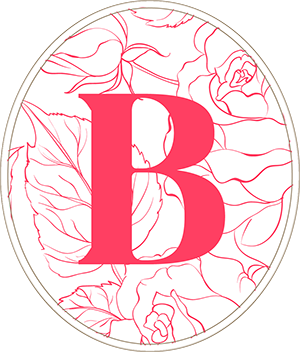
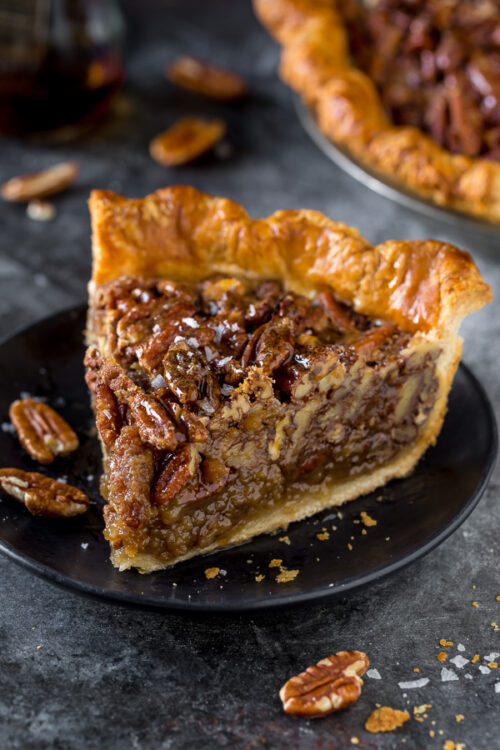
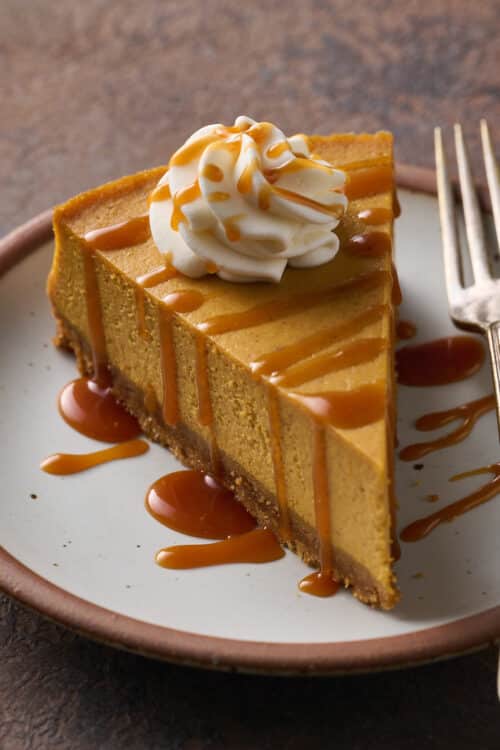
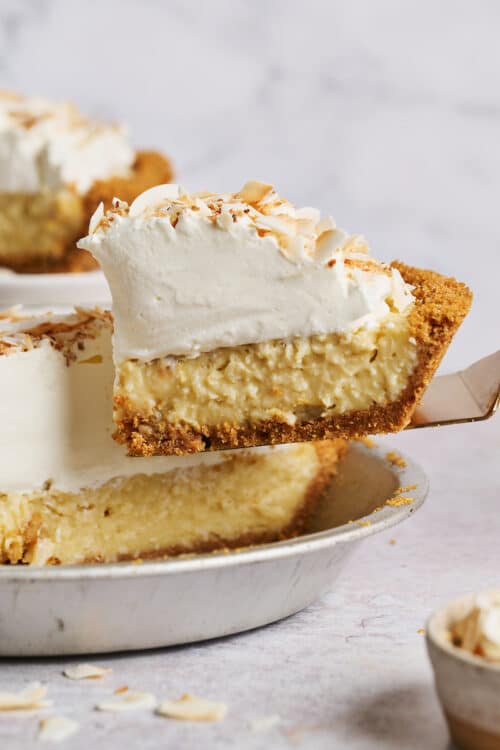
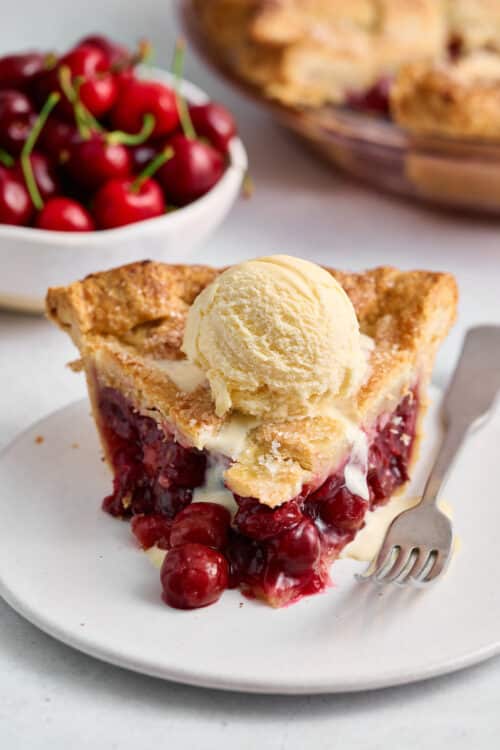
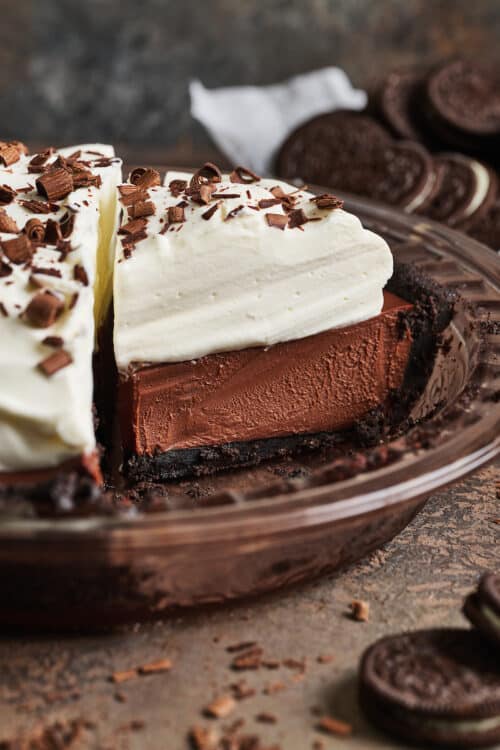
Your recipe saved me today. My job ran out of pie kids on Christmas eve and my cook randomly said you mal bread. Can you make crust? I had to improvise tools lol but to keep the butter from melting as cutting it with the flour I had a stranger full of ice underneath the bowl. Worked perfectly. Thanks
Gosh, who was the stranger full of ice? I can’t find anyone to do it.
Chris, I think she meant to say, “… I had a STRAINER full of ice underneath the bowl…” since she’s referring to improvisations to keep the butter from melting as she cut it into the flour. 😉
Hi!! Love the crust.. looks perfect! I am new to pies and wanted to make a Lattice one filled with homemade cherry and chia jam. Would the pie dough be enough for a 8″ pan pie? Also, do I need to pre bake this before adding the filling? Thanks!!
Just a note to your readers. Check the list of ingredients that is printed off to the list that is printed on the article. My computer showed 1 1/2 teaspoons of apple vinegar but printed out 1/2 teaspoons. The all-purpose flour read 1 3/4 cups but printed only 3/4 cups. The margins were wide enough to print the proper amount but for some reason did not. Just goes to show that you must be aware that everything you print may or may not be as you want.
Frank
Hi! I would like to use this recipe for a chicken pie. Do I leave out the sugar? And if I fill the pie (double crust) and keep it in the fridge won’t the bottom become soggy from the sauce of the fillings? Appreciate your advice ! Tks!
Hi Eileen. No need to leave the sugar out, but you can cut it in half if desired. I find the subtle sweetness is nice with sweet and savory pies. I don’t recommend filling the pie and keeping it in the fridge long, just 20 to 30 minutes. This will help the crust set and bake up nice and flaky. It won’t make the crust soggy in that short amount of time. Also, be sure to dust the bottom of your empty shell with a little flour before you fill it 🙂
Just made this crust for quiche. Prepared the crust last night and made the quiche this morning. Hands down best crust ever and super simple to make. It rolls out so nice and was easy to transfer. It tasted like a short bread cookie, flakey and soft. I would recommend this with any pie filling and I will for sure be sharing this recipe.
Thank you so much for letting me know, Caroline 🙂 I’m thrilled you enjoyed the pie crust!
It’s 2am in NJ and I couldn’t wait until tomorrow to comment. While the pie and crust chilled, I baked a little sample to taste. Omg! Delightful. BEST pie crust I’ve ever tried! Easy to roll and buttery. It melts in your mouth. This is now the only recipe I’ll use. Thank you!
YAY!!! Thank you so much for letting me know, Carolina 🙂 Happy Thanksgiving to you and your family.
I am using this crust for Thanksgiving! Of course, since it is a new recipe, I used the leftover crust and baked it to make sure of the taste prior to making my pies. WOW! We ate it all, Without any filling at all! It is so yummy! Great recipe! Thanks!
How long should this bake if you’re using it for a filled non-cooked pie (ex. French silk)?
Hi Allison. I would follow the recipe if it includes instructions for blind baking, or here’s a great article all about it http://www.thekitchn.com/how-to-blind-bake-a-pie-crust-cooking-lessons-from-the-kitchn-197553
I’m trying this for the first time and praying it turns out I have never had luck with pie crust so cross your fingers for me what temp do I bake at?
Hi Natasha. I’m so excited you’re trying this recipe out! You should follow the baking instructions for the pie you’re using, as there’s no universal way or temperature to bake a pie at. Please let me know if you have any more questions 🙂 Can’t wait to hear how it turns out!
I’m making an apple and pumpkin pie… do I need to pre-bake the crust??? I wouldn’t think so… but my recipes all call for premade crusts so it doesn’t say what do do in cases of homemade crust. Lol
Hi Becky! For apple and pumpkin pie there’s no need to pre-bake the pie shell 🙂
I’ve never made a pie crust before, and am making this for my in-laws this week, so fingers are crossed! You say in the tips that this needs another 20 minutes in the fridge after the pie is filled, but none of the pie recipes I am considering include this in the instructions. Am I misunderstanding something? Thanks!
Hi Brittany. I like to place the filled pie shell back in the fridge for 20 minutes to let everything set before it goes in the oven. This helps reduce the chance of the crust shrinking and also helps it puff up and stay flaky. I can’t wait to hear how your pies turn out 🙂